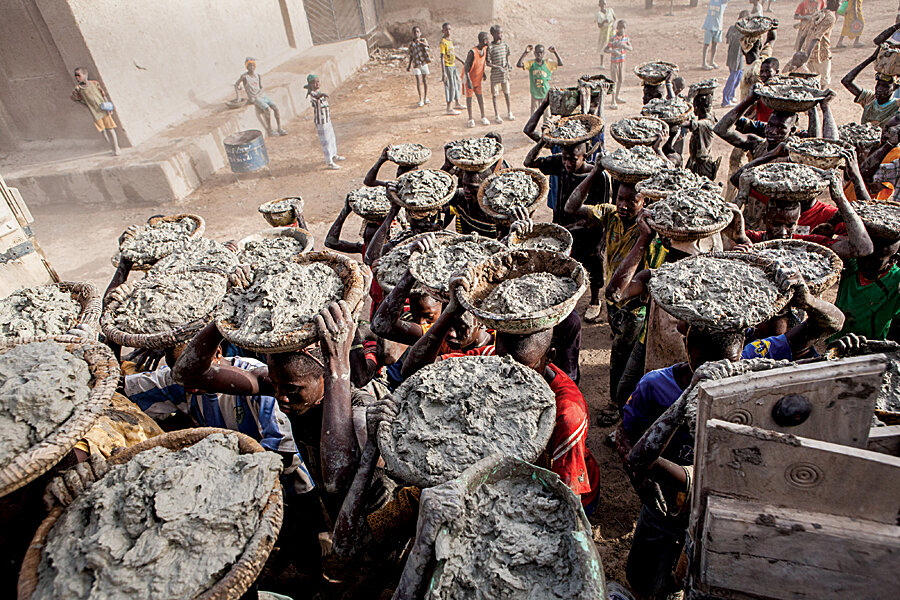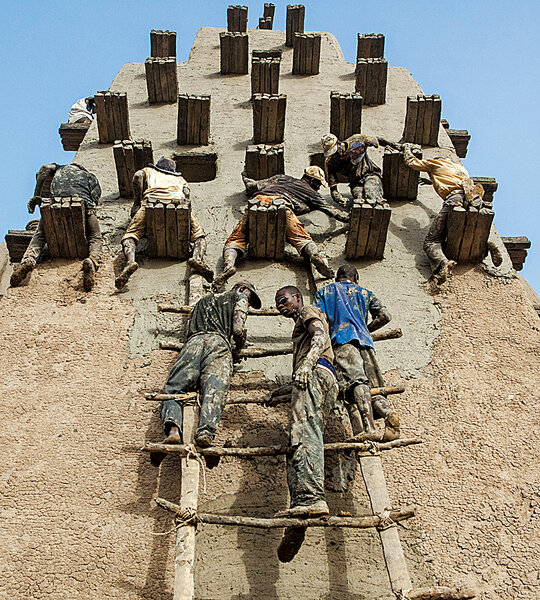Quiet Mali town, despite fighting nearby, gathers to honor its renowned mosque
Loading...
| Djenne, Mali
Early in the morning, just before the muezzin calls to early Muslim prayer, Bakary Touré steps out the door of his low mud-brick home. He walks the hundred yards across Djenné’s main square to the city’s great mosque, where the whole town is waiting.
Mr. Touré takes a large blob of mud and smears it on the cracked wall.
A moment later, hundreds of young men laden with wicker baskets full of dripping wet clay begin to swarm over the same mosque wall.
“No one touches the mosque before the oldest member of the town’s mason guild have put a stroke of mud to the mosque,” says the 92-year old Mr. Toure, who brings out his identity card to show us his age.
It was Djenné’s great mosque that put this town on UNESCO’s World Heritage list. And this re-plastering is an annual ritual involving the whole town.
The mosque is the largest mud-brick structure in the world, so unique that it looks like something from outer space. It is an imposing sand castle looming over the main square.
The architectural style, known as Sudanese, is native to the Sahel. The distinct features are a trio of square minarets topped by pointed pillars and crowned by an ostrich egg that dominates the facade. A permanent scaffolding that allows for scrambling up the sides to do mud work is created by palm tree boards inserted into the mosque in rows like toothpicks.
This year, as war took place across Mali, the town council debated long before they agreed to the annual re-plastering. Djenné, with its sheltered position -- nestled on an island that is sandwiched between the banks of the Bani and Niger river -- was spared any Islamist radical incursion. Maybe it was also because the town is home to a well-known Muslim sage.
In early winter, and only miles away, the hardline Islamic radical group Ansar Dine tore down century-old World Heritage monuments in Timbuktu. But Djenné’s grand mosque and mud-brick houses were left in safety.
Since then the Islamists have been pushed back by French and West African forces. However recent rebel attacks in the Mopti region shows they have not gone far. Town mayor Bamoye Traoré says that by allowing the Mosque festival to take place, the town is sending a clear message to the radicals.
“We are letting the Islamists know they have nothing to gain in Djenné.”








